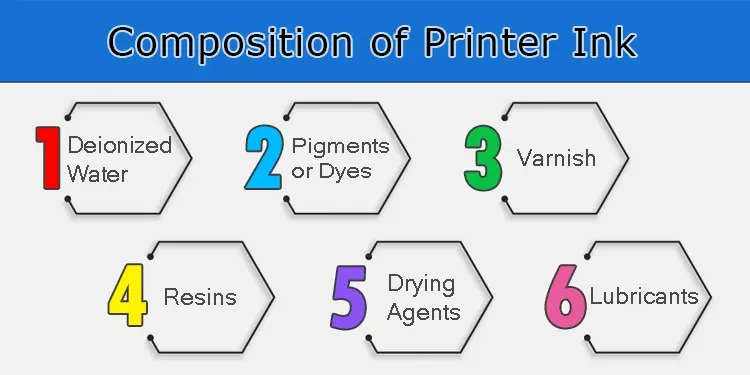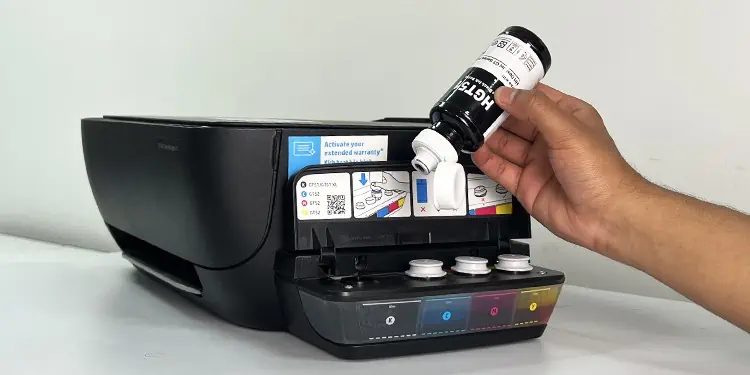If your printer is printing blank pages, it is likely that the printer is running low on ink. Over time, as you go on printing your documents and images, the ink level on a printer gradually decreases. In some cases, it is also possible that the ink may have dried out, causing the printer to not generate the printouts as expected.
But does the printer ink actually dry out?
In this article, I will try to answer this question and provide several ways to prevent ink from drying up quickly.
What is Printer Ink Made of?
Printer manufacturers generally use two kinds of ink with their printers—dye-based ink and pigment-based ink.
Regardless of the type, both consist of deionized water and color ingredients like pigments, varnish, resin, and other additives. Some manufacturers even include protein as an ingredient in the ink.

A dye-based ink comprises color ingredients dissolved in the water. However, pigment-based ink has color ingredients that remain as a suspension and do not dissolve in the water completely. So, the rate at which both these inks dry is entirely different.
Does Printer Ink Dry Out?
You may have seen a label on your ink cartridge mentioning the “Use before” date. It is normally two years from the date you purchased the cartridge. However, this does not mean ink will dry out after two years.
The drying rate depends on how often you use the printer, the operating temperature of the printer, and whether you use genuine cartridges. For instance, if you operate the printer at a high temperature, the color ingredients of the ink begin to evaporate. As such, only water remains in the ink, and you will begin to lose print quality.
Over time, water also tends to evaporate, making the ink thicker. When the ink becomes thicker, it will eventually end up drying the ink.
Pigment-based ink tends to dry more quickly than dye-based ink because it has insoluble color ingredients that evaporate more quickly than water.
How to Make Printer Ink Last Longer?
Here’re a few things to consider to prevent your printer’s ink from drying up quickly and make it last longer.
Keep Your Printer Running
The first thing you can do to prevent printer ink from drying is to keep your printer running. If you don’t use the printer that often, at least consider printing a page or two once every week.
I recommend you print nozzle check patterns every week to maintain the flow of ink in the printer.
Maintain Room Temperature
You should store printer ink in a room that is neither too hot nor too cold. Printer manufacturers recommend a temperature between 15 to 35°C as a safe temperature to store the ink.
Avoid storing the ink where it comes in direct contact with sunlight or any other heat source like a radiator.
If you are planning to leave your printer unused for quite a long time, you can also store the cartridges out of the printer. HP recommends using an airtight container with a damp cloth inside it to store the cartridges.
Avoid Refilling the Cartridges
You should always use genuine ink or ink cartridges from your printer manufacturer to avoid print quality issues. Refilling the ink into the ink cartridges results in air bubble formation inside the cartridge, making the ink dry up quicker.
You might have seen that the ink of your ballpoint pen tends to dry quicker when it is left with its cap opened. The same principle applies to the ink cartridge as well.

